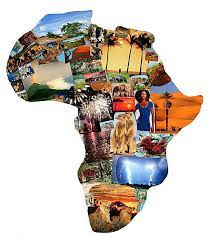The United States of Africa: A Pan-African Vision for Educational Empowerment and Socioeconomic Advancement
This article analyzes the potential for socioeconomic transformation within a hypothetical "United States of Africa" framework, prioritizing educational empowerment. Our analysis utilizes key theoretical concepts: regional integration, the process of merging multiple states into a unified political entity; human capital theory, which posits that investments in education and skills drive economic growth; and neo-functionalism, a model suggesting that sectoral cooperation fosters broader political integration. Furthermore, we draw upon modernization theory, emphasizing the role of education and technological progress in national development, and the capabilities approach, focusing on expanding individual potential. We explore these concepts' practical application for a unified and prosperous Africa, supported by real-world examples and comparative analyses.
Regional Integration and Economic Liberalization: A Synergistic Approach to Growth: The creation of a United States of Africa necessitates a coordinated strategy for regional integration and economic liberalization. Neo-functionalism suggests initiating cooperation in specific sectors – education and trade being prime examples – to build momentum towards broader political union. Economic liberalization, based on free-market principles and strengthened by regional trade agreements, stimulates competition, boosts economic activity, and generates employment, directly addressing poverty and unemployment. The European Union serves as a valuable case study, illustrating both successes and challenges inherent in this approach. Successful implementation requires meticulous policy design, effective implementation, continuous monitoring, and mitigation strategies for potential negative consequences. This process demands a thorough understanding of comparative advantage and the potential for both economies of scale and specialization within the integrated market.
Human Capital Development: The Foundation for Socioeconomic Transformation: Human capital theory emphasizes education's crucial role in economic growth. A continent-wide educational strategy focused on human capital development is therefore essential. This involves a standardized curriculum emphasizing Science, Technology, Engineering, and Mathematics (STEM) fields, supported by robust teacher training programs aligned with international best practices. Addressing educational inequalities through targeted scholarships, improved infrastructure in underserved regions, and inclusive educational practices—in accordance with principles of social justice and the capabilities approach—is paramount for equitable access to quality education. Achieving this requires substantial investment and careful coordination across diverse national contexts, potentially utilizing public-private partnerships and international development aid.
Political Liberalization and Good Governance: Pillars of Stability and Prosperity: A successful United States of Africa necessitates robust political institutions founded on democratic principles, transparency, and accountability. Political liberalization, encouraging citizen participation and good governance, fosters a stable environment attractive to both domestic and foreign investment. This requires developing strong, independent institutions upholding the rule of law, protecting human rights, and ensuring equitable resource distribution. Effective conflict-resolution mechanisms and promotion of peaceful coexistence among diverse ethnic and cultural groups are critical for long-term stability. Comparative studies of successful state-building initiatives globally provide valuable guidance, highlighting the importance of institutional design, capacity building, and fostering a culture of peaceful dialogue.
Strategic Implementation: Learning from Global Models and Addressing Challenges: Building a United States of Africa can learn from successful regional integration models such as the European Union. A phased approach, incorporating lessons from past African integration attempts, allows for incremental progress and adaptation. This requires careful navigation of potential obstacles, including diverse national identities, historical grievances, and power imbalances. Transparency, accountability, and inclusive decision-making processes are crucial for building widespread support and fostering a sense of collective ownership. Active participation from civil society organizations, the private sector, and international partners is vital for success. This phased approach, informed by institutional theory and the concept of path dependency, will allow for flexibility and responsiveness to changing contexts and emerging challenges.
Transformational Leadership and Shared Values: The Path Forward: The realization of a United States of Africa demands strong, transformational leadership committed to justice, equality, and human rights. These values must underpin all policies and institutions, fostering a prosperous and equitable society. This requires prioritizing inclusive and participatory decision-making, ensuring all stakeholders' voices are heard. Building trust and overcoming historical divisions among participating nations is paramount. Robust and independent conflict-resolution mechanisms and a culture of peace and reconciliation are crucial for the union's stability and success. This leadership style must be one that embraces transformative leadership models, advocating for collaborative governance and stakeholder engagement.
Conclusions and Recommendations: The United States of Africa vision offers a transformative path to continental progress. Prioritizing human capital development through education reform and simultaneous economic and political liberalization can unleash Africa's vast potential. Success hinges on strategically leveraging and adapting successful regional integration models to the unique African context. Future research should conduct comparative case studies of regional integration, analyzing successes and failures of similar global initiatives, and examining the roles of civil society, the private sector, and international cooperation. A unified Africa could revolutionize the continent, fostering economic prosperity, robust governance, and a stronger global standing. Critical elements for success include effective conflict resolution mechanisms, fostering mutual trust, and promoting equitable resource distribution. A strong focus on institutional capacity building and the development of effective regulatory frameworks will be essential to ensure the long-term sustainability and effectiveness of the integrated structure. Furthermore, a comprehensive assessment of the potential environmental and social impacts of the integration process will need to be undertaken.
Reader Pool: Considering the multifaceted challenges of achieving a United States of Africa, how can a robust framework of collaborative governance be designed to navigate the complexities of diverse national interests and ensure equitable participation across the continent?






